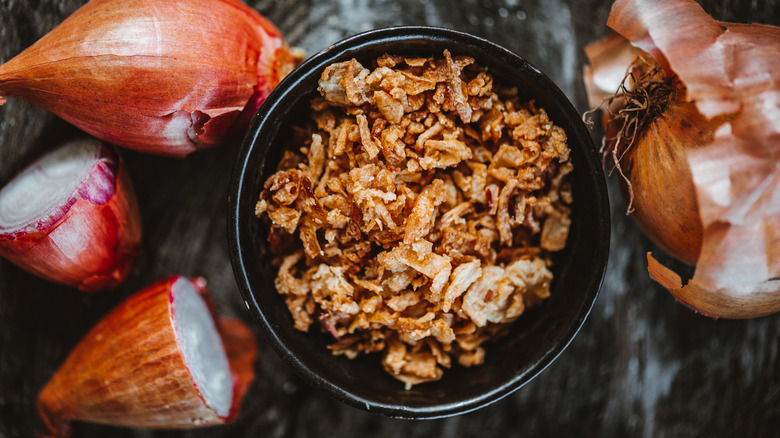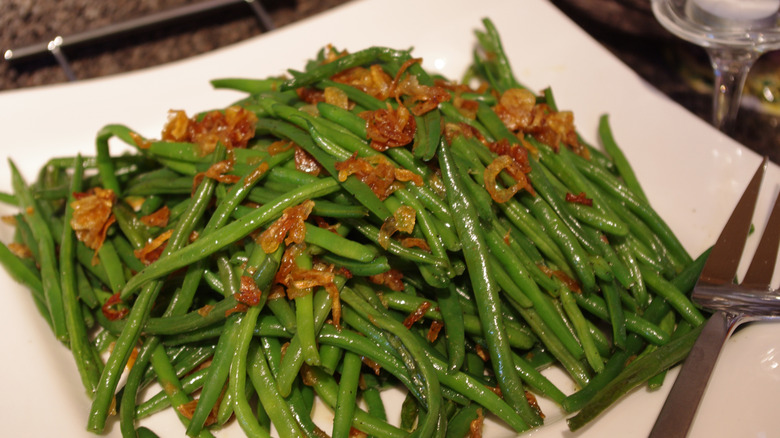Fried Onions Add The Perfect Crunch To Your Sauteed Veggies
Sauteing vegetables is one of the easiest and quickest ways to get your required servings of veggies — you can use them as a side dish or make a huge serving so it becomes your main meal. This cooking method is also a great way of using any leftover produce you have in the fridge. Rather than letting them go to waste, chop them up into thin slices and toss them in a wok with some olive oil or butter until they become tender-crisp. But aside from using the "from the ground up" method when sauteing to give your vegetables that ideal texture, you can top them with fried onions so you get an even more delectable crunch with each bite. As a bonus, fried onions add a savory sweetness to any dish, thanks to how they caramelize as they cook in oil — which also provides a delicious aroma and turns your simple sauteed dish into a gourmet experience.
You can easily grab a bag of this crispy garnish the next time you're doing your grocery shopping. Otherwise, it's simple enough to fry your own thin slices and small rings of onions. In fact, you can make fried onions in the microwave in just minutes, and you won't have much to clean up afterward. In addition to keeping them on hand in your kitchen to spruce up your sauteed veggies, you can similarly use them on your vegetable soup, stir-fries, and salads.
Use shallots for sweeter-tasting fried onions
White onions are great options for making this tasty garnish, but for fried onions with more of sweet, caramelized flavor, go with shallots. Yellow and sweet onions work, too, but if you want the flavor of your sauteed veggies to be the main attraction of the dish, shallot's delicacy is perfect for the job. If you only have one type of vegetable to saute (green beans, for example), a sprinkling of fried shallots won't overwhelm the taste.
Whatever method you choose to fry your onions, remember to make sure they've cooled down before you store any leftovers. Remove any excess oil, too, and let the fried onions air dry for a few hours. Gently break down the clumps that got stuck together during cooking to remove any lingering moisture that would affect the crunchiness of the garnish. Pick out the burnt pieces as well since their bitterness will affect the taste and aroma of the rest during storage. Once they're completely dry, place your leftover fried onions in a container with a tight lid to protect them from moisture — preferably a glass container, which won't retain odor. Keep it in a cool, dry, and dark place.
Whenever you need some, reheat your fried onions with a little oil on the stovetop or spread them on a baking sheet and place them in the oven for a few minutes at 250 degrees Fahrenheit to bring back their crunch — your sauteed veggies will thank you!

